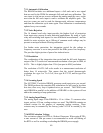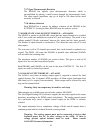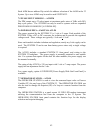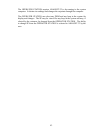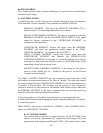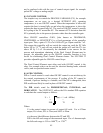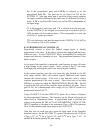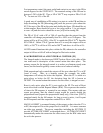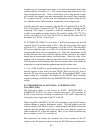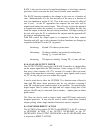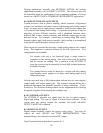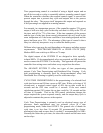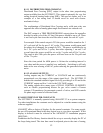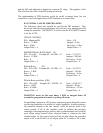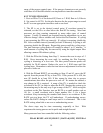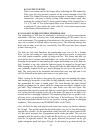48
Another way of viewing the reset action is to look at the integral term in the
control equation of section 8.1.4. The control output due to this term is the
error integrated over time. Thus a small offset over a long period of time
will increase the integral sum and consequently the control output until the
PV is equal to the SP. At this time, the proportional control output will be
zero and the system will be stable at setpoint due to the integral sum.
Consider again the above example, with the PB at 30 and the SP at 300
o
F,
50% of the output is obtained at 285
o
F, but zero output is obtained at SP.
Assuming 50% output is required to hold the temperature at 300
o
F, it
would be reasonable to assume that the PV would be stable at 285
o
F. This
results in an offset of 15
o
F from 300
o
F SP. To shift the PB so that 50% of
the output is at 300 oF, reset is used.
If, AUTOMATIC RESET is used with .5 R/M and assuming the last PB
response was 10% and the output is 50%. After the first minute, the output
will be at 55%. After the second minute, it will be at 60%. After the third,
65% and so until the output is at 100%. It would take ten minutes to do this,
assuming that there was no temperature rise. Since the temperature would
actually increase, the error would be reduced and the portion of the control
output due to proportional control would decrease. Since the value of the
integral sum is increasing with time, the effect of the reset output increases.
This interaction would continue until SP was reached, where reset holds the
temperature at setpoint and the proportional output becomes zero.
A .5 to 1 R/M would be a good starting point for most processes. A slow
process requires a slow reset (less then 1R/M). When too fast of a reset is
used, the PV may slowly cycle around the SP. When adding RESET to the
control mode of a controller, the addition of the RESET mode normally
requires widening of the PB from the PROPORTIONAL mode control only
setting.
8.1.7 PROPORTIONAL, INTEGRAL, AND DERIVATIVE
CONTROL [PID]
The Derivative mode is also known as RATE, ANTICIPATION, or
APPROACH. RATE is the more common term used. The function of
RATE is to prevent the overshoot or undershoot of PV at SP. It does this by
slowing the rate of approach of the PV to the SP.
When using PB with RESET, the PV will sometimes go past the SP when a
setpoint change or process disturbance occurs. This can happen since the
correct setting of the PB will cause a small damped oscillation around the
setpoint and the integral sum built up by the reset function cannot be
reduced until the PV is past the setpoint. Thus, a Two-Mode controller may
have overshoot, even if it is correctly set.
Most processes can tolerate an overshoot, but if the overshoot of the PV
relative to the SP cannot be tolerated, then the RATE function must be used.



